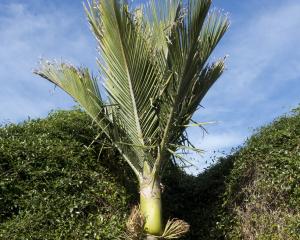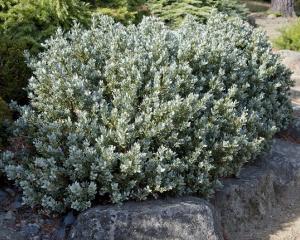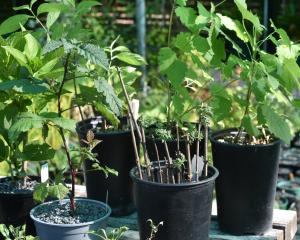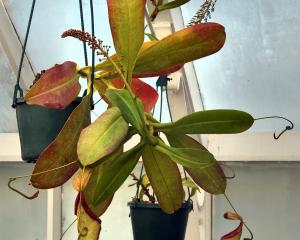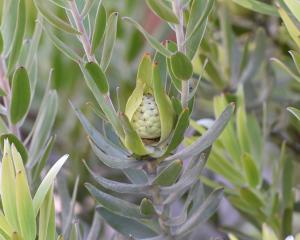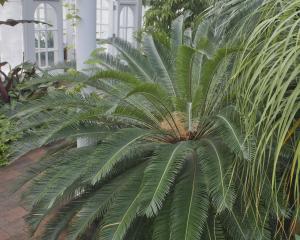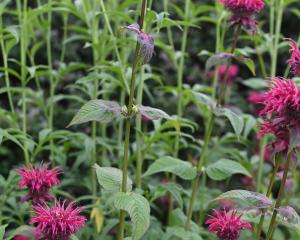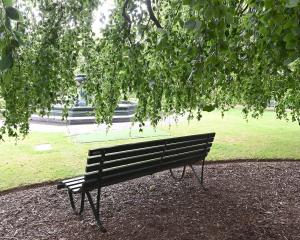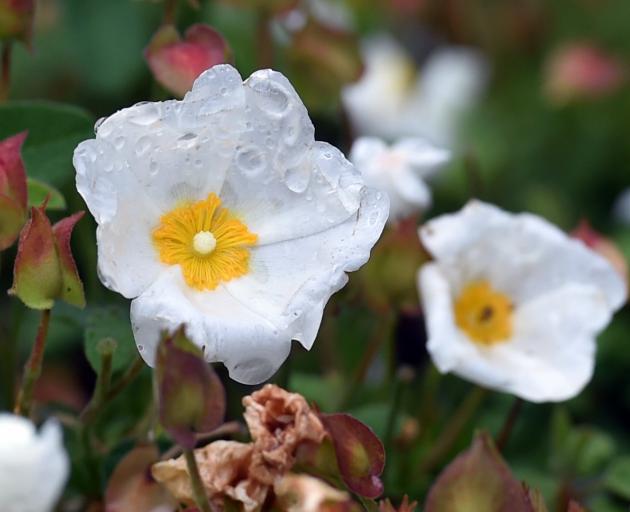
Cistus and Helianthemum are two genera of flowering evergreen shrubs in the rock rose family, Cistaceae. In Dunedin Botanic Garden Cistus ladanifer (pictured) can be seen in the Cedars of Lebanon Grove billowing over the border's edge among the Cistus x skanbergii. Nearby, in the rock garden, another rock rose in the same family, Helianthemum, exudes great charm bobbing about on little stems.
Sunshine and good drainage are requirements of these ancient ornamentals, yet rock roses are so resourceful. Needing little to no irrigation, they're great for erosion control and xeriscaping (gardening using water conserving-techniques). They develop mycorrhizal relationships, which helps them access moisture and nutrients and survive in poor soil. They can even be host plants for truffles. Their fragrant gum resin and petals are used for making incense, herbal medicine and perfume.
Crinkled, five-petalled flowers are soft white, pinks and yellows. Cultivars expand in brightness to burnt siennas and rich reds. Flowers last only a few hours, delightfully littering the ground beneath, but, thankfully, replenish day after day for months of display.
Rock roses are endemic to the Mediterranean and are reminiscent of Rosa rugosa, which has naturalised on the same rocky coastal regions, hence the name "rock rose".
Garden Life is produced by Dunedin Botanic Garden. For further information, contact Jacqui Skelton.

